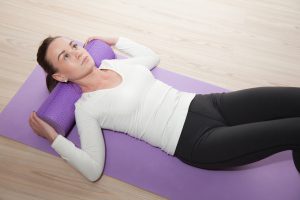Muscle soreness is inevitable for the active individual and every one of us will encounter it at some point in our lives. Muscle soreness is more accurately known as delayed onset muscle soreness or DOMS in short. The intensity of the soreness could vary from individual to individual, but a general pain and stiffness can be felt in the affected muscles any time after several hours to days after the affected muscle are being worked out. Since muscle soreness is thought to be caused by the microtrauma to muscles from lengthening of it, treatment of soreness generally improves the healing time taken for the microtear to be healed. Without further ado, here are 5 ways to treat muscle soreness quickly.
Warm Up
The very first step that you should take is always to warm up your body. Even while having muscle soreness, warming up your body increases blood flow to your body. You will find that using a heating pad or other heating sources on the affected muscle can loosen up the muscles and provide temporary relief of muscle soreness. Before stretching, warm up the affected muscle group and you will find that this can help speed up the healing process.
Stretch
The best way to really treat and even prevent muscle soreness is to simply stretch your body regularly, before and after a workout. Stretches can be performed statically or dynamically, but the general idea is to prepare your muscles for the more intense fitness routine. Even after you have encountered muscle soreness, stretching can relieve the tension caused by lengthening of the affected muscles, providing instant relief to you.
Myofascial Release
Myofascial release or foam rolling is the art of applying force to the fascia, which is soft tissue found in your body. Myofascial release works by targeting trigger points or knots in your muscles, which may be aggravating the pain experienced during muscle soreness. In addition, myofascial release helps to lengthen or shorten your muscle groups, depending on the intention while administering the action. This can speed up muscle recovery and aid in improving the flexibility of your muscles, providing instantaneous relief during your muscle soreness.
Supplementation
There are various supplements available on the market to aid in muscle recovery and reduce muscle soreness. These supplements work by aiding in muscle recovery and reducing inflammation throughout the body, allowing you to recover from the soreness at a faster rate. Some of the most propagated supplements for muscle soreness include omega three fatty acids, glutamine and branch chain amino acids. Regular supplementation is required to feel the effects.
Ice Baths
Finally, ice baths are a good option once the soreness kick in simply because they reduce inflammation drastically. Although this may mean reducing blood flow to the specific area for the period of the treatment, the immediate relief from muscle soreness can be felt from the reduced inflammation, making it a great short-term solution. Combining ice baths with myofascial release and supplementation is a great way to target sore muscles that could be affecting your daily life.



